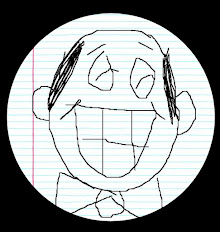20 January 2011
Read Seneca: a review of "Art" at Playhouse on Park
Just saw a fine production of Art at Playhouse on Park, which runs through Sunday, January 23, and two quick personal anecdotes come to mind.
The first just happened this weekend, while visiting my sister-in-law in Baltimore. We were invited into her upstairs bathroom, currently under renovation, to determine the "whiteness" of the walls. While in the white I saw the very faint pink by which she is bothered to the point of wanting to repaint, in the big picture the walls are white. (How often, after all, will one be in the bathroom with a klieg light?!)
The other memory dates back to the '90s in graduate school, as I practiced presenting a paper (to faculty and fellow students at The Catholic University of America) which I was to deliver at a professional conference at Boston U a few weeks later. It was an excerpt from my dissertation and dealt with American neo-Latin poet through the lens of the literary critical theory deconstruction. Well, at least one faculty member got a hardy laugh at my (admittedly) jargony attempt and sent the clear (and important) message to trod lightly when dealing with such theories.
Both of these anecdotes touch directly on the theme and plot of the current production at POP. Art was written by Yasmina Reza in 1995 and, translated from the French by Christopher Hampton, would win the 1998 Tony for Best Play. While dealing with the question of what is (and isn't) art (e.g., Can an all-white painting really be considered legitimate?), the sharply written script really focuses on the nature, purpose, and limits of friendship.
In a quick 75 minutes, the relationships between Marc (Andy Gershenzon), Yvan (Sean Harris), and Serg (Rich Hollman) are played out in scenes fueled by plenty of superiority, insecurity, indignation, humor and love to go around. Harris and Hollman are reunited with director Tom Ridgely from last year's POP production of The Complete Wks of Wllm Shakespeare (Abridged), and again show the ability and chemistry to make the audience laugh/gasp/hurt in quick succession. Mr. Gershenzon deftly captures Marc's role as the critic/catalyst. While Marc, in lesser hands, easily could be simply unlikeable, here the audience -- even as we recognize his worst tendencies -- never stop understanding and sympathizing with him, no small feat.
The minimalist design of Michael Jarrett's lights and the set by Amanda Jesse worked very well to highlight the words and actors (although Ms. Jesse's costumes less so: I never quite bought Marc's sweater and "Beatle boots" and, given the constant mention of Yvan's having lost 10 pounds, perhaps his clothing should've been a bit looser).
In the end, the play is a classic because, though very much of its time (no one outside English doctoral programs is talking deconstruction now), its themes of friendship and the evolution of art never go out of style. If you don't believe me, take Serg's advice and "Read Seneca."
Subscribe to:
Post Comments (Atom)







I moved to Hartford in the summer of 1977 which was about when Carl Andre's "Stone Field Sculpture" was installed across the street from the Wadsworth. I thought it was hilarious when the city council asked the town attorney to tell them if they had the authority to decide if it was "art" (presumably with the goal of reclaiming the $87,000 fee). In my bare bones Asylum Hill apartment, I posted one index card with the word "ART" on it on the top of one wall in my living area and another with the word "WALL" on it on the top of the opposite wall, just in case the city council visited and was confused.
ReplyDeleteThat's a great anecdote! Thanks.
ReplyDelete